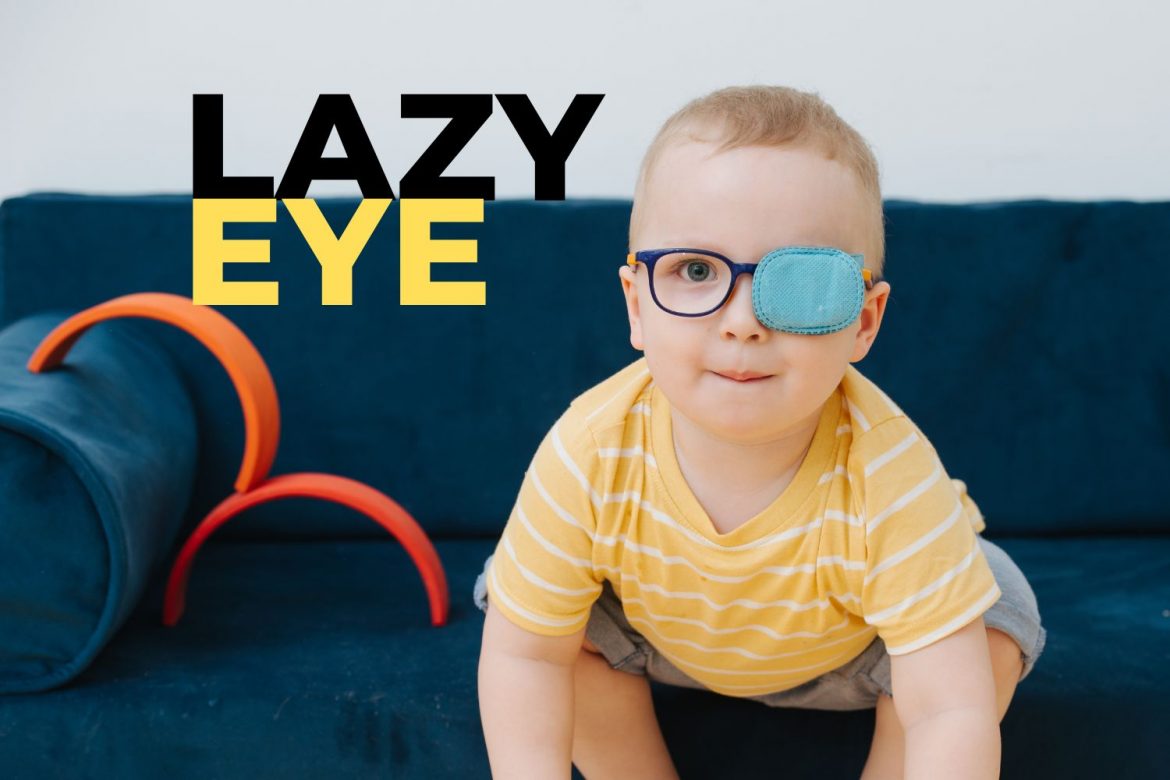![]()
Lazy eye is misunderstood. What does having a lazy eye really mean?
A true “lazy eye” is not an eye that is fatigued or has a high corrective prescription. The definition is an eye with reduced vision due to abnormal visual development.
Individuals with lazy eye depend heavily on their normal eye to see, while the weaker (amblyopic) eye will worsen over time from lack of stimulation from the brain. Why is an eye considered lazy?
Lazy eye presents in only 3 out of 100 children. However, it is the leading cause of decreased vision in children. Also, understand you are born with lazy eye. You cannot develop a lazy eye later in life.
What is a lazy eye?
Lazy eye is a common term used in place of the medical term “amblyopia.” Amblyopia is decreased eyesight in one eye because the connection between the brain and one eye failed to develop normally. The eye and brain structures can be healthy, but the two organs must be used together for the best vision.
Common signs and symptoms of a lazy eye include:
- An eye that turns in or out
- Lack of depth perception
- Squinting or shutting an eye
- Abnormal results on a vision test
- Poor eye-hand coordination
- Tripping and/or balance problems
- Slower reading speed and comprehension
- Head tilting
An eye can be lazy for three reasons:
1. Refractive amblyopia
Refractive amblyopia is the most common type of lazy eye and occurs because of:
- Nearsightedness
- Farsightedness
- Astigmatism
Often, this type of lazy eye is not identified early enough. The child’s eyes will have a normal appearance, but the child is essentially depending on one eye.
Leaving refractive amblyopia untreated can lead to complications such as:
- Learning and reading difficulties
- Problems related to visual function, such as visual acuity
- Serve strabismus (crossing of eyes)
- Blindness
2. Strabismic amblyopia
Lazy eyes can also develop due to an eye condition called strabismus. Strabismus is when one eye is straight, and the other eye turns either in or out. The brain will use the straight eye and ignore the turned eye.
Strabismus can run in families, but family members may not have the same type of strabismus. Inward eye turn in infants less than 20 weeks old frequently resolves on its own, but if the eye is still crossing after 4 months old, the child should be evaluated by a doctor.
Prematurity and various neurological and genetic disorders increase the risk of strabismus.
3. Deprivation amblyopia
Congenital cataracts may result in deprivation amblyopia. The cataract blocks light from being received by the retina and blurs vision. If the vision is blurred, the brain will not use that eye. If the cataract is removed prior to age 7, it is possible to regain vision with proper treatment.
Is lazy eye treatable?
If diagnosed at an early age, a lazy eye can be treated. Connections between the brain and eyes develop early in childhood, therefore the most effective treatment results occur before the age of 7. If left untreated, the patient will never have good vision out of the lazy eye.
Treatment options for amblyopia depend on the cause of the lazy eye and the degree of decreased vision. Treatment may include a combination of the following:
- Corrective lenses
Glasses or contact lenses can correct problems such as nearsightedness, farsightedness, or astigmatism that result in a lazy eye.
- Eye patches
An eye patch is placed over the stronger eye to stimulate the weaker eye. The child is told to wear the patch between 2-6 hours daily. It generally takes several weeks to months to improve the vision in the weaker eye. No one likes to wear an eye patch, but patching is extremely important for normal visual development.
- Bangerter filter
This special filter is placed on the eyeglass lens of the stronger eye. The filter blurs the stronger eye, like an eye patch, and works to stimulate the weaker eye.
- Eyedrops
Atropine is an eye drop prescribed for daily use to blur the vision in the stronger eye and force the child to use the weaker eye. Light sensitivity and eye irritation can be side effects of Atropine.
- Surgery
Surgery may be performed if the amblyopia is due to deprivation or strabismus. If the eyes continue to cross or wander, after being fit with appropriate glasses, surgical repair may be needed to straighten the eyes.
- Vision therapy
Vision therapy can improve a patient’s vision, depth perception, and reading fluency, and may be used along with other treatments. Vision therapy (VT) consists of individually prescribed and monitored exercises aimed at developing vision and visual processing. The program can range from weeks to months, depending on the severity of diagnosis and compliance. Patients will have in-office therapy and homework. Some optometrists are specially trained in VT.
Why is correcting a lazy eye so important?
When a lazy eye goes uncorrected, the person may have difficulty with many life skills, tasks, and occupations. A lazy eye will prevent the person from having accurate depth perception, affect the ability to compete in some sports, and create difficulty for certain life skills and tasks including driving and cooking.
Lazy eye is a non-specific, broad term that is often used incorrectly. If you have normal visual development, equal vision between your eyes, and your eye is not turned in or out, it is unlikely you have a lazy eye. Most often, when people say they have a lazy eye, they mean they require a higher prescription in one eye, or one eye is more dominant. However, everyone has a dominant eye (just like a dominant hand).

